#bombay talkies
Explore tagged Tumblr posts
Text
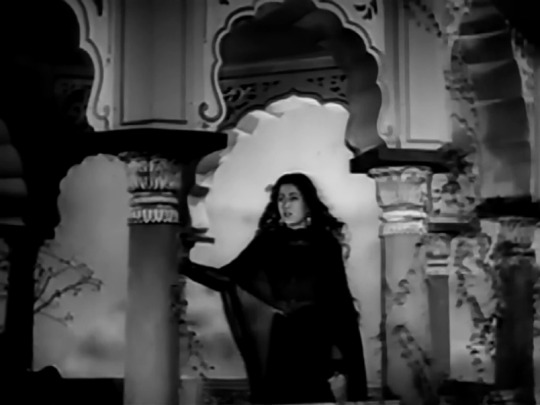
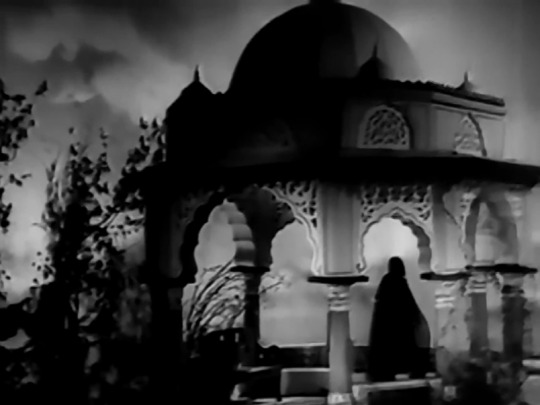

Mahal (1949) // dir. Kamal Amrohi
------------------------------------------------------------------------------
#mahal#mahal 1949#kamal amrohi#madhubala#bombay talkies#indian cinema#hindi cinema#bollywood#old bollywood#indian films#bollywood movies#movie scenes#cinema#movies#films#classic bollywood#classic cinema#world cinema
25 notes
·
View notes
Photo

7:11 AM EDT November 1, 2024:
Shankar Jaikishan - "''Typewriter Tip, Tip, Tip'' From Merchant-IVory's Film ''Bombay Talkie''" From the Soundtrack album The Darjeeling Limited (September 25, 2007)
Last song scrobbled from iTunes at Last.fm
#Shankar Jaikishan#The Darjeeling Limited#''Typewriter Tip Tip Tip'' From Merchant-IVory's Film ''Bombay Talkie''
6 notes
·
View notes
Text
Novelty thy name is Shankar Jaikishan
By Subramanian Natesan Shanker jaikishen have many firsts in filmdom.The 1st Englsh film by an Indian music director was Tarzan goes to India( 1964) had music by the duo.They didn’t stop with that.In 1970 they scored the music for another English film Bombay Talkie by Merchant Ivory Productions. The film starred the star couple sashikapoor and Jennifer kendl.The film had only four songs.The…

View On WordPress
#bombay talkie#Bombay Talkie (1970)#Hari om tatsat#hasrat jaipuri#merchant ivory production#shankarjaikishan#Usha Iyer#Usha Uthup
1 note
·
View note
Photo

Pretty Indian Food at Bombay Talkie
0 notes
Text

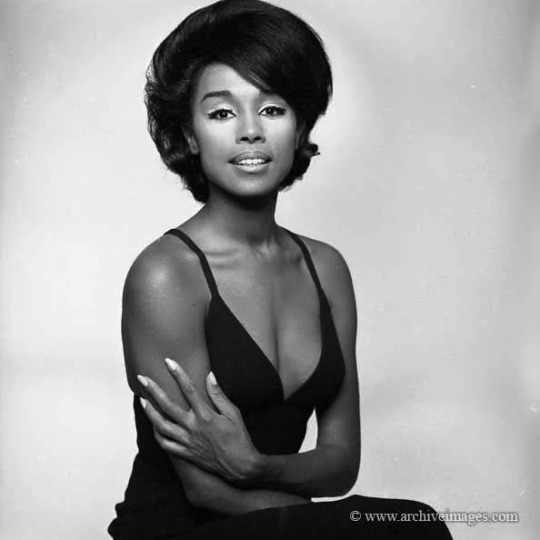
Propaganda
Devika Rani (Achhut Kanya)—She was grandniece of Rabindranath Tagore (laureate). She was sent to boarding school in England at age nine and grew up there. After completing her schooling, she joined the Royal Academy of Dramatic Art (RADA) and the Royal Academy of Music to study acting and music, at a time when aristocratic women did not enter showbiz. She studied filmmaking in Berlin. It is well known that she underwent training at the UFA Studios in the art and technique of acting under Eric Pommer, and other aspects of film production including costume and set designing and make-up, under eminent directors like GW Pabst, Fritz Lang, Emil Jannings and Josef von Sternberg. She is also reported to have worked with Marlene Dietrich. She had a multi-faceted personality and took on many responsibilities of film production at Bombay Talkies, a studio that she co-founded with Himanshu Rai in Mumbai in 1934. She often took care of hair and make up, supervised set design and editing, scouted for new talent and mentored them. She was the face of Bombay Talkies, and also the reason behind the political and financial backing the studio received, at a time when even women from red light districts refused to work as actresses. She was the first recipient of the Dadasaheb Phalke Award, when it was instituted in 1970.
Diahann Carroll (Paris Blues, Carmen Jones, Porgy and Bess)— Face of an angel. She had the range. She brought chemistry with every romance she portrayed. She also had a great fashion sense, and was so pretty Mattel made a doll based off of her.
This is round 4 of the tournament. All other polls in this bracket can be found here. Please reblog with further support of your beloved hot sexy vintage woman.
[additional propaganda submitted under the cut.]
Devika Rani:
Achhut Kanya (1936) is the only one of hers I've seen but hot DAMN

Diahann Carroll:
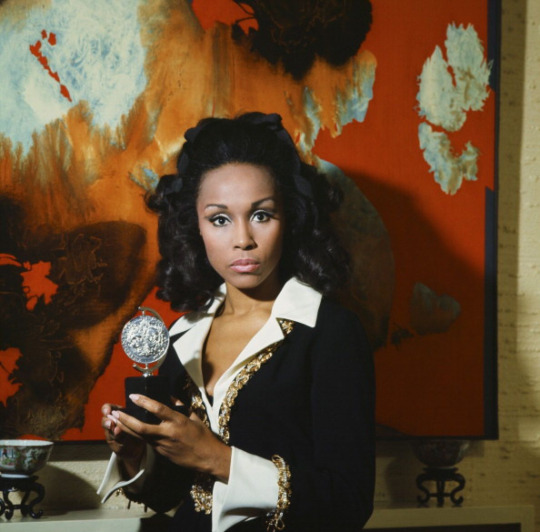
Another groundbreaking black actress, although she might be better remembered for her television roles. She was also an activist and worked with charities to support women in need.
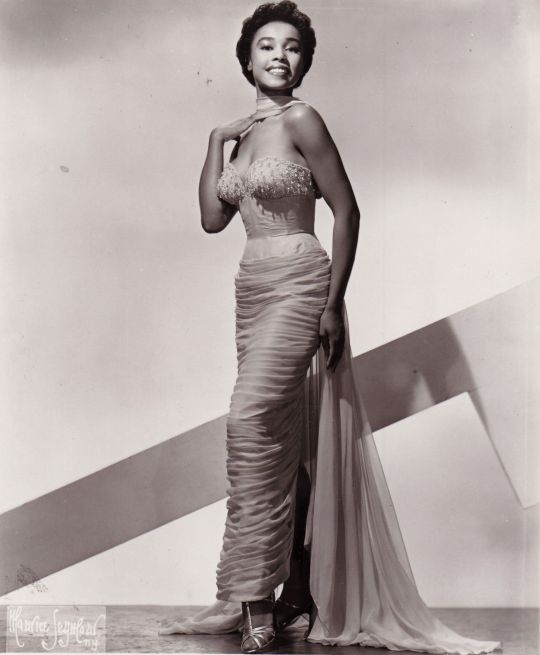
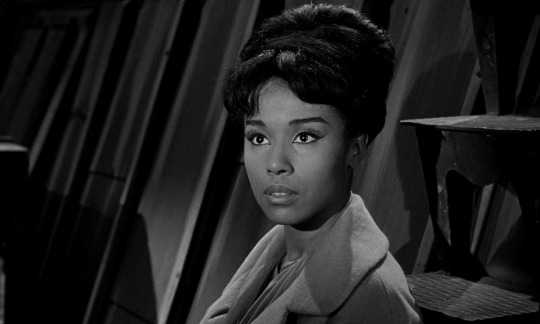

here she is hanging out with shadow prince anthony perkins :3
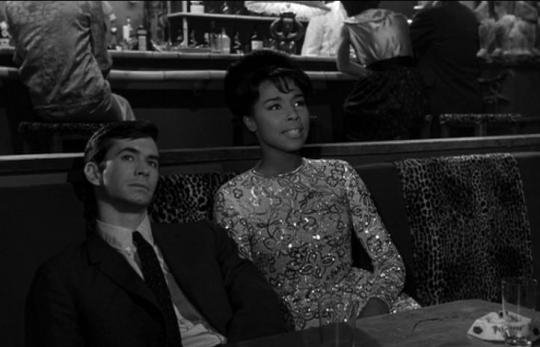

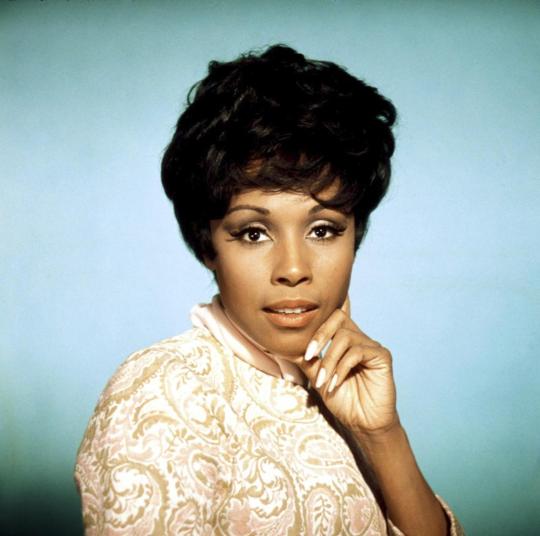

169 notes
·
View notes
Text

Tribute to Lalita Deulkar, the well-known playback singer and supporting actress of 1940s in Hindi and Marathi films, on her 14th death anniversary today.
Lalita Deulkar was fairly busy as a film singer in 1940s. She was born in 1925 on Lalita Panchami day. She liked music from childhood. Her uncle Pandharinath aka N. Deulkar was a classical singer and she learnt classical singing from Baburao Gokhale.
Her first step into films was as a supporting actress. She acted in Bombay Talkies films including ‘Nirmala’ and ‘Durga’. Thereafter, she turned to playback singing and provided playback for over 60 films. Her duet with Mohammad Rafi “Mohe raja ho le chal nadiya ke paar” from the film “Nadiya Ke Paar” (1948) became very popular in 1948.
She also provided playback in Marathi films including Prabhat’s “Sant Janabai”, “Vitthal Rukmini”, “Mee Daru Sodali”, and “Suhasini”. Her songs had also been recorded by Young India Gramophone Company. Among them, “raanii jaa_uu sakhyaa re, shobhaa paahuusakhyaa re” became quite popular.
In 1949, she married music director Sudhir Phadke and gradually moved away from films. At their wedding, which took place at the Sahitya Parishad hall in Pune, the well-known singer Mohammed Rafi sang the traditional ‘ma.ngalaaShTak’ in the traditional tune but with Hindi words. He had prepared extensively for this in advance. Her notable films as playback singer include Sajan (1947), Nadiya Ke Paar (1948) and Shabnam (1949).
Lalita Deulkar passed away on May 25, 2010.
13 notes
·
View notes
Text
Jubilee
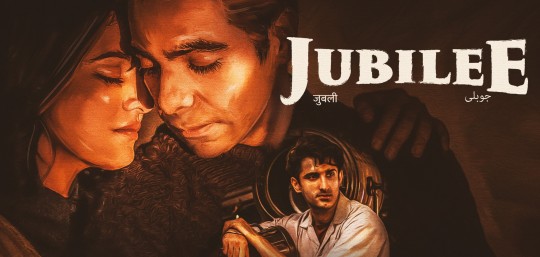
First thing first, Jubilee shows you the realism of the Bombay talkies era with an interval by building huge and royal studios, cinema reels, crew chairs, hand painted posters, an ambitious producer with business acumen, smoking pipe, outfits, and so much more. The series in itself is quite symbolic for the purpose of depicting the golden era. Yes, I call it a golden era. I read the show is pretty much inspired by the life of Himanshu Rai and Devika Rani. Let’s kickstart.
Praise worthy angles from the entire series that are responsible for the story:
Blazing journeys of 5 characters Roy, Binod, Jay, Niloufer, Walia
The unparalleled fate of 2 studios Khanna studio and Roy studio
The transformations, transitions, and evolving cinema with a blend of crime, love, conspiracy and fame.
Beginning, Rise and Fall
It is commendable to see how the makers combined the most essential attributes of the black and white cinema - Dialogues, Music, Drama and great frames.
The 3 compelling dialogues that summarize Cinema which are crafted beautifully in the film with the scene,
'Power is within this weapon of cinema.'
'Cinema can raise a level by giving the audience a taste of poetry, photography, music and aspirations.'
'Cinema can empower people.'
Let us put the stars on the shoulders of the team. Vikramaditya Motawane, Atul Sabharwal and Soumik Sen are the names. I should say, a gorgeous job on the series by all the teams.
Supposedly it has to be one of the most expensive projects as it costs a fortune to build a city entirely. Especially a city which used to look a certain way but not any more. It is bound to attract criticism, comparisons and judgements. Hence applause for the art department.
Moving to the title, Jubilee. Good one. The word Jubilee was significant in the non-bollywood era. It marked a big success of the film if it reaches Jubilee unlike the crore club where films are less than 2 stars but box office is 200 cr.
Vikramaditya Motawane has created a web series that is uncommon among current subjects. Lots of makers tried to recreate the golden era but most of them went unnoticed. I am fond of Khoya Khoya Chand for the infamous vintage era. However, reaching everybody through OTT through Jubilee with a 10 episode series of 50 minutes is a master thought. That breathing space to judge the success with an olden times ‘interval’ but of a week is outstanding. However, such a big risk.
Mentioning positives of the show to move with. It has a decent Star cast that is not very glittering and glam. Subtle and real. When you cut on the star factor you can actually see through the show and its potential. So I liked the cast to portray that era. Apararshakti Khurana as one of the leads is huge. Names to mention: Wamiqa Gabbi and Prosenjit Chatterjee. I am all praises for Wamiqa Gabbi. Simply Wow. She is a complete package of dance, acting, nakharas, ada and reality. An actress who very clearly takes you to the era of queens like Waheeda Rehman, Mala Sinha, Nutan and the list goes on. She does not imitate anybody. Prosenjit Chatterjee, an innovative and ahead of his time producer who wants to make a mark but probably wishes to stick to what sells on screen with a traditional cinema perspective. The curiosity that both Roy and Niloufer go on building in their own way is really good. Sidhant Gupta’s energy matches the character’s but his acting felt an over-do at times. But when he walks as a star is one act you can’t miss but notice. It shows a mix of stardom and simplicity. Great work there. He is the Guru Dutt effect as a one man show with actor-director qualities. Aditi Rao Hydari is just being herself, a beauty. Ram Kapoor, Shweta Basu are names known for good acting just like that. All the supporting actors have done a celebrated job in their roles. Amazing to watch Arun Govil in a web series. The casting decisions are appreciable. The character Govil plays as a calm father is peaceful for the eyes and ears.
Music is magnificent. Thanks to Amit Trivedi for giving one more album that can be put on loop. The compositions of jubilee prove that even today a melody is possible with sensible ‘Hindi’ lyrics which are louder than the music and each word, chord and instrument is heard and worth a praise. Kudos to Amit Trivedi and Kausar Munir for creating songs that calm people like us can humm. My personal favourites are Voh Tere Mere Ishq, Dariyacha Raja, Na Koi Mera and Saare Ke Saare Akele. Rest you would not like to skip as well. It has the sound of the period it belongs to. The lyrics bear to our usual spoken Hindi language - simple and understood. I can’t put this more straight. Those days were about melody and dialogues that hit the audience.
Dialogues as expected are filled with drama and conviction.
Favourite frame from the series is Jay and Nilo sitting on the road drenched in the rain in front of a theatre under the poster of Baiju Awara. Splendid! You do not have to show intimacy by stripping down and making love. Sometimes it's just the way you sketch love on screen. Quite a romantic frame. Other Mesmerizing frames:
Binod first in front of the fire that also marks the end frame of Roy in front of fire.
Sumitra sitting in front of the mirror in the train.
Roy, sitting in his private screening theatre, calls the man to project the reel.
Jay Khanna in his own studio on the first day against the Taxi cut out.
The last shot of Roy studio with lights dimming symbolizing the fall.
Jay Khanna’s cabin with Taxi Driver Poster of Jay and Nilo.
And the favourite of many, the RK inspired Jay and Niloufer umbrella scene.
I am glad to see one series with no skin show, no kissing at every alternate shot and most importantly close to no violence. Every other show today is either lust or violence with litres of blood flowing. This series is like detox.
Some curiosity creeps in. Was Phone tapping really a thing? Would the show not be as captivating as it was if tapping was not a part of the show? Mysterious.
Coming to an end resembles a Guru Dutt film with a song like Dekhi Zamane ki Yaari. Saare ke Saare Akele went on flipping pages and how heartbreaking every page was!
Looking at Jubilee overall,
What’s remarkable is the tragic ending given to all the characters like most of the yesteryear actors saw. It is not a fictitious act of drama. We have heard stories where either people disappeared from the industry or their demise was not a very pleasant one or some love stories were not as happy as their film’s or their stardom just vanished with a flop. I admire the way fiction was weaved with the inside stories from the film industry. But across 10 episodes we saw a lot of screen time invested in long pauses. Not sure why the typical fame was not shown like ordinary fans gathering around Madan or crowds at the red carpets of premieres. No premieres at all actually. But the pre-independence period, partition and its effect on the cinema industry was precisely connected. The makers very smartly keep awards at bay as filmfare started in 1954 and this story wraps up by 1953. Also, the details that were very well shown were salaried crew, technicians and even actors associated with the studio, the refugee camps, international interventions and the editing on negatives of the reel. What is incredible to see is the grey shade every character gets with situations. It's meticulous writing.
All the characters had a closure but I wonder what happened to Shamsher Walia.
I was waiting for the last ‘The End’ or ‘समाप्त’ after we saw Interval post the 1st batch of 5 episodes. But that did not come. Another season in making? Giving benefit of doubt as the glorious era of cinema has just started in Jubilee. But I must say first is the only first. What follows is to piggyback on the popularity of last success. It loses its charm. I hope the makers continue the legacy if they plan seasons.
To end this I would say Jubilee gives you the pictorial version of the tales and accounts narrated by the legends and insiders. I will not deny that the series seems stretched or sluggish at times but I think establishing the actors and an entire past generation will take its own time.
Jubilee is a must watch for people who believe in the essence of cinema and Hindi film industry of yesterday. It is for obsessed film lovers who have not yet fallen prey to Bollywood’s faux stardom.
#jubilee amazon prime#jubilee prime#jubilee#jubilee tv series#amazon prime#amazon original#prime video#prime#aparshakti khurana#aditi rao hydari#sidhant gupta#prosenjit chatterjee#wamiqa gabbi#shweta basu prasad#arun govil#bollywood#hindi film#hindi cinema#hindi film industry#indian film industry
20 notes
·
View notes
Text
OF 1940'S BOLLYWOOD'S CHILDHOOD FRIENDS -TURNED- (DIRECTIONLESS & LITERALLY NAMELESS) NEW PESHAWARI KIDS ON THE BLOCK! - OF VASUDEV & RANBIR ! ... OOPS ... YUSUF KHAN & SHRISHTI NATH ! ... OOPS ... DILIP KUMAR & RAJ KAPOOR!
Did you know that the Dilip Kumar- Raj Kapoor friendship goes back not just to their childhoods growing up close by in Peshawar, but to literally several generations back, with Dilip's Dad being best friends with Raj's Grand-Dad ie Prithviraj Kapoor's father, their ancestors in fact having grown up in the same locality all life.
Infact 'tis via this friendship with Raj's grandfather, Lala Basheshwarnath, that Yusuf's father came to crystallize his dislike for the acting profession as a whole, letting no opportunity pass by in unabashedly criticizing his friend's son Prithviraj's wayward ways, in front all & sundry incl Yusuf, in a profession that he regarded of loose moral values & low prestige, this outlook also borne of his staunchly orthodox Muslim views on life, also simultaneously being heavily politically involved in Muslim politics, alongside the Ali brothers, & a big supporter of the Caliphate Raj idea itself.
So anyway, once in Bombay to try his luck (for as he narrates, "any job available whatsoever in Bombay Talkies" (the story leading to which we've already narrated in our Dilip Kumar-Ashok Kumar blog), he landed up bagging not just any, but the main lead's role, for which was also offered a certain pretty handsome salary price. But what really set his interest going, was that this sum, was much much higher than the salary being received by his good friend & only person he really knew even remotely from the movies then, Prithviraj Kapoor's son, Raj Kapoor, who he was in regular touch with, & who'd been working as an Asst Director in the same studios for some time too! Which is why, as he humorously recalls, unaware of the (perennial) hierarchy btwn Assts & Heroes, he had to get it re-confirmed from studio bosses, whether this offered sum was a monthly or yearly figure!
Next problem though, remained in informing his father of this new job placement, which he knew, would be totally & utterly against his express & strongly held beliefs! And so, afraid of his father's wrath, decided to not tell his family of his new job placement, as long as he could avoid, a very important turn of events in the story, to what was to follow next - the naming of the new hero, a routine affair in Bollywood back then!
Studio bosses came up with 2 alternative names, Dilip Kumar and Vasudev!
Dilip recalls his immediate reaction being, "Anything but Yusuf Khan pls!"
He amusingly recalls, how he too, just like the whole world, would learn of his new, & forever re-christened name, from the morning papers of a month later. And Dilip Kumar was born!
Also re-birthing his old childhood bond with Ranbir (birth name Shrishti) now re-christened Raj from their kiddy Peshawar days, a time he would fondly recall in interviews many decades later, of those nascent times of 1945-46, when both these to-be pillars were yet wannabes-
Dilip says: "Both us friends lived in constant fear of what'd happen at the studio each next day. And he (that's Raj, being an Asst Director, & incharge of more petty matters) would keep harping on small things & what all could go wrong, & I'd keep scolding him for always bringing it up & spoiling my mood."
Dilip continues- "I also had a fondness for watching good films, many many times...upto 3 theater shows a day, & that repeated for many days, if a film fascinated me enough. While Raj was not of the same view. He found the repetition confusing, moreover and thought it a waste of time. I always defended myself, by pointing to the quality of films (intl & natl) being watched by us here, & the value of our purpose. Anyway, what I imbibed from my observation, as one starting out, was the minimal amount of acting being done. I recall him saying once, "Listen,what we'll do is change it. Do it differently, this & that..", & I immediately reacted, "NO. I WILL NOT DO IT. I JUST WON'T!" "
How was History to know, while one became the grand "Showman"of Indian Cinema, the other would go on to be called the loveliest & among the Greatest Method Actors the world's ever seen!









2 notes
·
View notes
Text

FOUNDER OF BOMBAI TALKIES DEVIKA RANI AUTOGRAPHED PHOTO
1 note
·
View note
Text
What are Bimetal Rivets?
Bimetal rivets, a specialized type of fastener, are engineered by combining two distinct metals to achieve unique properties and overcome the limitations of single-metal rivets. This innovative design offers several advantages, making them ideal for a wide range of applications.

How Bimetallic Rivets Work:
A bimetal rivet typically consists of a base metal, often chosen for its strength and cost-effectiveness, and a cap or head made of a different metal with specific properties. For instance, a common combination is a steel shank with a copper head. This unique construction allows for:
Improved Electrical Conductivity: In applications where electrical conductivity is crucial, the addition of a conductive metal like copper or brass to the head enhances current flow.
Enhanced Corrosion Resistance: By combining a corrosion-resistant metal like stainless steel with a more cost-effective base metal, bimetallic rivets offer superior protection against environmental degradation.
Tailored Thermal Properties: The combination of metals can be selected to optimize thermal expansion and contraction, ensuring consistent performance across varying temperatures.
Applications of Bimetal Rivets:
Bimetallic rivets find applications in various industries, including:
Electrical and Electronics: Used in electrical connectors, switches, and other components where electrical conductivity and corrosion resistance are paramount.
Aerospace: Employed in aircraft construction to join dissimilar metals while ensuring structural integrity and electrical continuity.
Automotive: Utilized in automotive components to improve corrosion resistance and electrical performance.
Construction: Employed in building structures to connect different types of metals, such as steel and aluminum.
Radiance Alloy & Electricals Pvt Ltd., a leading Bimetal Rivet Manufacturers in Mumbai, Maharashtra, India, specializes in producing high-quality bimetallic rivets that meet the stringent demands of diverse industries. Their expertise in metallurgy and manufacturing ensures that their products deliver exceptional performance and reliability.
By understanding the unique advantages of bimetallic rivets, engineers and designers can leverage these innovative fasteners to optimize their designs and achieve superior performance in their respective applications.
Address: Bombay Talkies Compound, 99/102, Malad, Somwari Bazar, Malad West, Mumbai, Maharashtra 400064
Phone: 097693 74796
#bimetal rivet manufacturers in india#bimetal rivet manufacturers#bimetal rivet manufacturers in Mumbai#Maharashtra
0 notes
Text
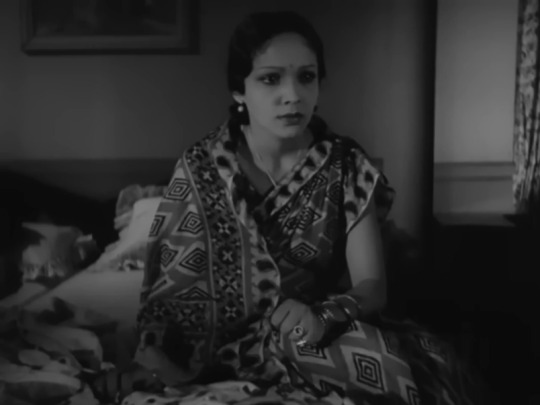
Devika Rani in Nirmala (1938)
| dir. Franz Osten
#nirmala#nirmala 1938#franz osten#devika rani#indian cinema#hindi cinema#bollywood#cinema#movies#films#old bollywood#world cinema#classic cinema#1930s#bombay talkies#cinematography#indian movies#hindi movies#bollywood movies#south asian cinema#asian cinema#indian films#hindi films#bollywood films
7 notes
·
View notes
Photo

9:26 PM EST December 14, 2024:
Shankar Jaikishan - "''Typewriter Tip, Tip, Tip'' From Merchant-IVory's Film ''Bombay Talkie''" From the Soundtrack album The Darjeeling Limited (September 25, 2007)
Last song scrobbled from iTunes at Last.fm
#Shankar Jaikishan#The Darjeeling Limited#''Typewriter Tip Tip Tip'' From Merchant-IVory's Film ''Bombay Talkie''
2 notes
·
View notes
Text
Complete Merchant Ivory
1. THE HOUSEHOLDER, 1963 2. SHAKESPEARE WALLAH, 1965 3. BOMBAY TALKIE, 1970 4. SAVAGES, 1972 5. ROSELAND, 1977 6. HULLABALOO OVER GEORGIE & BONNIES PICTURES, 1978 7. THE EUROPEANS, 1979 8. JANE AUSTIN IN MANHATTAN, 1980 9. QUARTET, 1981 10. HEAT AND DUST, 1983 11. THE COURTESANS OF BOMBAY, 1983 12. THE BOSTONIANS, 1984 13. THE DECEiVERS, 1988 14. THE PERFECT MURDER, 1988 15. THE BALLAD OF SAD CAF, 1991 16. HOWARDS END, 1992 17. IN CUSTODY, 1994 18. MAURICE, 1996 19. THE PROPRIETOR, 1996 20. THE MYSTIC MASSEUR, 2001 DOCUMENTARIES: 1. VENICE THEMES AND VARIATIONS, 1957 2. THE SWORD AND THE FLUTE, 1959 3. THE DELHI WAY, 1964 4. ADVENTURES OF A BROWN MAN IN SEARCH OF CIVILIZATION, 1972 5. HELEN QUEEN OF THE NAUTCH GIRLS, 1973 6. SWEET SOUNDS, 1976 7. STREET MUSICIANS OF BOMBAY, 1995 SHORT FILMS: 1. THE CREATION OF WOMAN, 1960 2. AUTOBIOGRAPHY OF A PRINCESS, 1975 The White Countess (2005) The Divorce (2003) The Golden Bowl (2000) A Soldier's Daughter Never Cries (1998) Surviving Picasso (1996) Jefferson in Paris (1995) The Remains of the Day (1993) - Slaves of New York (1989) The Wild Party (1975) The Guru (1969)
1 note
·
View note
Text
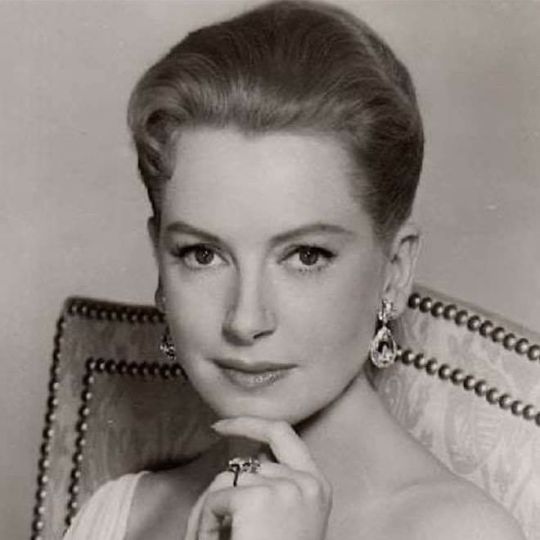

Propaganda
Deborah Kerr (Bonjour Tristesse, An Affair to Remember, The King and I)— For several decades she held the record for most Oscar nominations without a win (6 in total), and she was a prolific leading lady throughout the 40s and 50s. She's best known today for the romance An Affair to Remember with Cary Grant, and as the governess in The King and I. Many people have this erroneous perception of her as extremely prim, proper, and virginal, but this could not be further from the truth. When she first came to Hollywood under MGM she was typecast into boring decorative roles, but broke sexual boundaries for herself and Hollywood generally in From Here to Eternity, when she made out (horizontally!) with Burt Lancaster (on top of him!) in the famous Beach Scene. She went on to play many sexually conflicted women, a character type that would define most of her post- Eternity work. She continued to break Hays Code boundaries with Tea and Sympathy, which addresses homosexuality/homophobia head-on, and even did a topless scene in The Gypsy Moths 1969!! One of the only classic stars to do so. She deserves a more nuanced and frankly a hotter legacy than she currently has!!!
Devika Rani (Achhut Kanya)—She was grandniece of Rabindranath Tagore (laureate). She was sent to boarding school in England at age nine and grew up there. After completing her schooling, she joined the Royal Academy of Dramatic Art (RADA) and the Royal Academy of Music to study acting and music, at a time when aristocratic women did not enter showbiz. She studied filmmaking in Berlin. It is well known that she underwent training at the UFA Studios in the art and technique of acting under Eric Pommer, and other aspects of film production including costume and set designing and make-up, under eminent directors like GW Pabst, Fritz Lang, Emil Jannings and Josef von Sternberg. She is also reported to have worked with Marlene Dietrich. She had a multi-faceted personality and took on many responsibilities of film production at Bombay Talkies, a studio that she co-founded with Himanshu Rai in Mumbai in 1934. She often took care of hair and make up, supervised set design and editing, scouted for new talent and mentored them. She was the face of Bombay Talkies, and also the reason behind the political and financial backing the studio received, at a time when even women from red light districts refused to work as actresses. She was the first recipient of the Dadasaheb Phalke Award, when it was instituted in 1970.
This is round 3 of the tournament. All other polls in this bracket can be found here. Please reblog with further support of your beloved hot sexy vintage woman.
[additional propaganda submitted under the cut.]
Deborah Kerr:
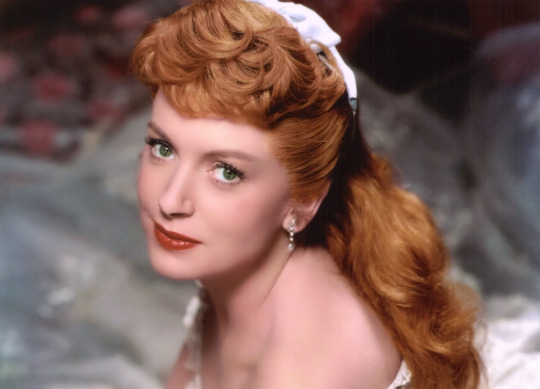
I think she was one of my first crushes before I realised I was bi in The King and I when I watched it as a kid honestly. The kissing scene in From Here to Eternity is iconic for a reason. Actually tried to learn the accents for the characters she was playing if they weren't English which is more than pretty much anyone else was doing then. Played very restrained characters who frequently seemed to be desperate not to be so restrained. Did horror movies without venturing into hagsploitation tropes. Gave Marni Nixon the credit she deserved for her share of the singing in The King and I.
Anne Larsen is a peak late 1950s bisexual with big MILF energy. Have you seen the behind the scenes pics of her wearing a suit?? Have you????? Vote Deb as Anne Larsen.
Nominated for an Oscar six (6) times and never won, but besides her having actual talent (hot), and besides her looking Like That (very hot, also beautiful), she was always playing women who are, like, crazy repressed. Which makes it fun and easy for me to read these characters as queer. Icon!!!! You know what's hot? Playing ambiguously gay in vintage Hollywood.

Her face and talent and body, yes, ofc, duh. But also!!! Her HANDS!!!! I may be but a simple lesbian, but she is the best hactor (hand actor) that ever lived and that's HOT! For propriety's sake I feel I must redact a large portion of my commentary on this subject. Anyway. She's hot in her most famous roles (mentioned above), and also some of her sexiest hacting is on display in An Affair to Remember (her hand on the bannister when Cary Grant kisses her off-screen??? HELLO???), Tea and Sympathy (when she's trying to persuade Tom not to go out and she keeps flexing her hands like she wants to reach out to him but can't??? ALLY BEHAVIOR! WE STAN!), and The Innocents (which opens and closes with extended shots of her hands bc director Jack Clayton was also an ally and he did that for ME). Much of her appeal also lies in the fact that she often played deeply repressed characters and you know what's hot? When those uptight characters finally unravel. It's sexy. It's cathartic. It's erotic. Plus, she's beautiful to look at in both black & white and technicolor, and the more of her films you see, the more you can't help but fall in love!

Literally is in thee most famously sexy scene of all time (or maybe just during the hays code era which is what we're talking about HELLO), which is the beach scene with Burt Lancaster in from here to eternity. To quote a tumblr post of a screen capture of a tweet of a video of joy behar on the view: "y'know, there used to be movies where they were kissing on the beach... From Here to Eternity. They're kissing-- Burt Lancaster and Deborah Kerr are Kissing on the Beach and then the WAVES crash!! You know exactly what they did!"

She might have a reputation of being chaste and virginal or whatever, but we all know it's the quiet ones who are certifiable FREAKS
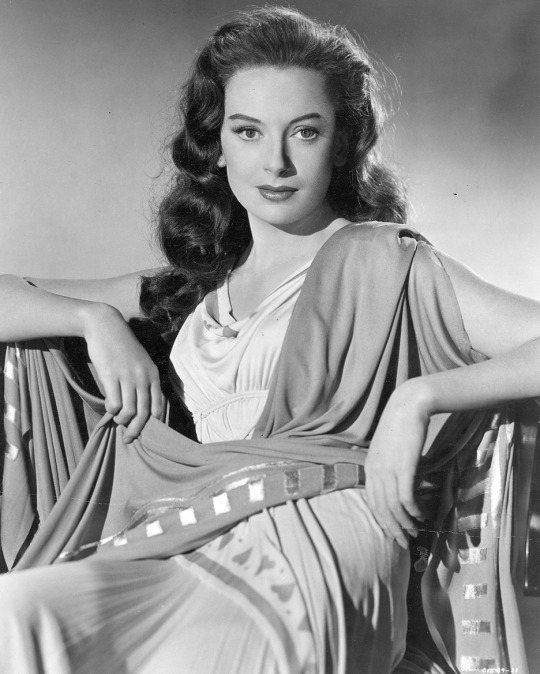
Devika Rani:
Achhut Kanya (1936) is the only one of hers I've seen but hot DAMN
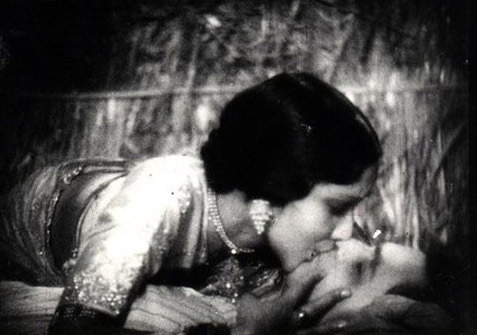
247 notes
·
View notes
Text

Tribute to Saraswati Devi, the first woman music director in Hindi films, on her 44th death anniversary (09/08/1980).
Born in a Parsi family in 1912, Saraswati Devi was a trained classical singer and rose to become India’s first woman music director of Bollywood.
A musical rage in the 30s and early 40s, Saraswati Devi's musical career was mostly confined to films produced by Bombay Talkies. Starting with 'Jawani Ki Hawa' in 1935, she went on to compose highly popular music for hit films like Achhut Kanya, Kangan, Bandhan and jhoola.
She was born as Khursheed Manchersher Minocher – Homji.
She changed her name to escape the wrath of the conservative elements of her community as they could never stand that a lady from their clan would enter the film world.
Once when at a gathering the Bombay Talkies owner Himanshu Rai heard her, he instantly invited her to join his concern as a music director. She was reluctant at first, not knowing how she would adjust herself to the needs of the film industry. But finally she accepted the offer.
She was the first woman music director no doubt. But the biggest challenge she faced was to groom non-singers into singers. That was a very, very big challenge in view of the competition from New Theatres as she didn’t have a Saigal or a Kanan to sing her compositions. That is why one should say that she had a formidable task to perform unlike her counterparts like R.C.Boral, Tamir Baran and others in Calcutta.
The biggest contribution by Saraswati Devi, therefore, was to produce hit songs through the lips of non-singers like Ashok Kumar, Devika Rani and Leela Chitnis.. Right from Achchut Kanya till Jhoola, Saraswati Devi went on rampage, so to speak, producing one hit after another. Leela Chitnis could sing hit songs like, ‘Meera ke jeevan ki sooni parri re sitar’ (Kangan), ‘Man bhavan lo sawan aya re’(Bandhan) and ‘Jhoole ke sang jhoolo jhoolo mere man’.(Jhoola) Imagine Saraswati Devi producing a golden jubilee hit in the voices of Ashok Kumar and Devika Rani in film ‘Achhut Kanya’ (a film that Nehru saw and appreciated)-‘Main ban ki chirriya ban ke ban ban bolun re’. The biggest hit by her was the marching song of Bandhan, ‘Chal chal re nau jawan’ sung in solo by Ashok Kumar, sung in chorus by Ashok Kumar and sung as a duet by him with Leela Chitnis. She used a non-singer like Sneh Prabha to sing the Puner Milan song, ‘Nacho nacho pyare man ke mor’. The male singer she had was Arun Kumar, who sung for Kishore Sahu in Punermilan, for Mumtaz Ali in ‘Jhoola’ (Main to Dilli se dulhan laya re he babuji) and others. Incidentally, it was she who gave break to Kavi Pradeep as a singer though he was writing lyrics for the concern since 1939 from film ‘Kangan’. She first used him in that immortal song of ‘Bandhan’ which is played in the back ground: ‘Piyu piyu bol praan papeehe piyu piyu bol’ Pradeep did sing subsequently some big hits after leaving Bombay Talkies. But in ‘Jhoola’ he has left behind a memorable song too tuned by Saraswati Devi: ‘Mere bichade hue saathi teri yaad sataye, baar baar teri chavi aye birha agan jaraae’
After she left Bombay Talkies, she shot into limelight again in the early fifties when she tuned two non-film ghazals for Habib Wali Mohammad. These were: ‘Lagta nahin hai dil mera ujjarre dayar mein’ and ‘Yeh na thi hamari kismet ke visaal-e-yaar hota’. When you listen to her compositions, specially the indigenously-flavored background music, you are transported into the environment of the India of the early 20th century.
During the later years of her life, the bad and selfish film world turned apathetic towards the doyenne. Not even a single person visited her when she fractured her hip bone after falling from a private bus. The legendary singer and India’s first female music director left for a better world in 1980 with no one to mourn her death. Even the media did not find her worthy of an obituary. Image: Saraswati Devi, Lata Mangeshkar, Madan Mohan, Jaikishan, Anil Biswas and Naushad
5 notes
·
View notes
Text
The Golden Duo: Kishore Kumar and R.D. Burman
When one speaks of timeless music and melodies that resonate across generations, the name Kishore Kumar inevitably emerges. Known as one of the most iconic playback singers in the history of Indian cinema, Kishore Kumar wasn’t just an artist; he was an institution in himself. His voice, a symphony of emotions, captured the essence of love, joy, heartbreak, and celebration. With a career that spanned decades, he left an indelible mark on the golden age of Bollywood and became a cultural phenomenon whose influence continues to transcend time.
A Humble Beginning in Khandwa
Born as Abhas Kumar Ganguly on August 4, 1929, in Khandwa, Madhya Pradesh, Kishore Kumar hailed from a culturally rich Bengali family. Despite his humble beginnings, Kishore’s love for music blossomed at an early age. His father, Kunjalal Ganguly, was a lawyer, while his mother, Gouri Devi, was a homemaker. Kishore’s elder brother, Ashok Kumar, was already a celebrated actor in Bollywood, which gave Kishore a glimpse into the world of cinema and art.
Initially, Kishore Kumar had no formal training in music. Instead, he idolized the legendary K.L. Saigal, often mimicking his singing style as a child. This fascination with music and his natural flair for creativity laid the foundation for his eventual stardom.
The Journey to Stardom
Kishore Kumar moved to Mumbai to join his elder brother in the film industry. Despite his raw talent, his journey wasn’t easy. His first stint in Bollywood was as a chorus singer at Bombay Talkies. His acting debut came in 1946 with the film Shikari, but it wasn’t until the 1950s that he gained recognition as an actor in movies like Ladki and New Delhi. However, his comedic brilliance truly shone in Chalti Ka Naam Gaadi (1958), where he starred alongside his brothers, Ashok Kumar and Anoop Kumar.
While Kishore Kumar was establishing himself as a versatile actor, his heart remained with singing. His big break as a playback singer came in 1948 with the song “Marne Ki Duayen Kyon Mangu” in the film Ziddi. Over the years, he transitioned into a full-time playback singer, delivering hits that defined an entire era.
The Golden Era of Playback Singing
The 1960s and 1970s marked the pinnacle of Kishore Kumar’s singing career. His collaboration with music directors like S.D. Burman, R.D. Burman, and Laxmikant-Pyarelal produced a treasure trove of chartbusters. Songs like “Mere Sapno Ki Rani” and “Roop Tera Mastana” from the film Aradhana (1969) not only became instant hits but also ushered in a new era of Bollywood music.
Kishore’s voice had a unique quality that resonated with the common man. It was soulful yet playful, versatile yet distinct. His ability to convey emotions through his singing was unparalleled. Whether it was the romance in “Pal Pal Dil Ke Paas,” the melancholic longing in “Chingari Koi Bhadke,” or the sheer joy in “Zindagi Ek Safar Hai Suhana,” Kishore Kumar’s songs struck a chord with listeners of all ages.
A Multifaceted Genius
What set Kishore Kumar apart from his contemporaries was his unmatched versatility. Apart from singing and acting, he was also a lyricist, composer, and producer. He even directed films, showcasing his flair for storytelling. His creative genius knew no bounds, and he often brought his eccentric personality to his craft.
His yodeling, inspired by Western artists, became his signature style, setting him apart in the competitive world of playback singing. This unique vocal technique, combined with his expressive voice, gave his songs a distinctive edge. Tracks like “Yeh Shaam Mastani” and “Main Hoon Jhoom Jhoom Jhoomroo” are perfect examples of his innovative style.
Enduring Legacy
Kishore Kumar’s journey came to an untimely end on October 13, 1987, when he passed away at the age of 58. However, his music lives on, continuing to inspire millions. His contributions earned him eight Filmfare Awards for Best Male Playback Singer, and he remains one of the most celebrated artists in Indian cinema.
More than three decades after his passing, Kishore Kumar’s songs are still loved by audiences worldwide. His ability to convey raw emotions, coupled with his unparalleled versatility, ensures that his legacy remains untarnished. For many, his music is a gateway to the golden era of Bollywood.
The Timeless Appeal of Kishore Kumar
What makes Kishore Kumar music timeless? It’s the universality of his themes and the sincerity of his expression. His songs touch on every human emotion, making them relatable even in today’s fast-paced world. Whether you’re in love, facing heartbreak, or simply celebrating life, there’s a Kishore Kumar song for every mood.
In an era dominated by technological advancements in music, Kishore Kumar’s voice serves as a reminder of the magic that pure talent and passion can create. His songs are a testament to the power of music to transcend barriers of language, culture, and time.
Rediscover the magic of Kishore Kumar by diving into his rich repertoire of songs. Create a playlist of his evergreen hits and share it with friends and family. Let his music remind you of the beauty of simplicity and the timeless charm of classic Bollywood. Share your favorite Kishore Kumar memories and songs on social media using the hashtag #KishoreMagic. Let’s keep the legend alive!
0 notes